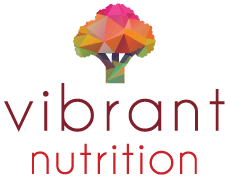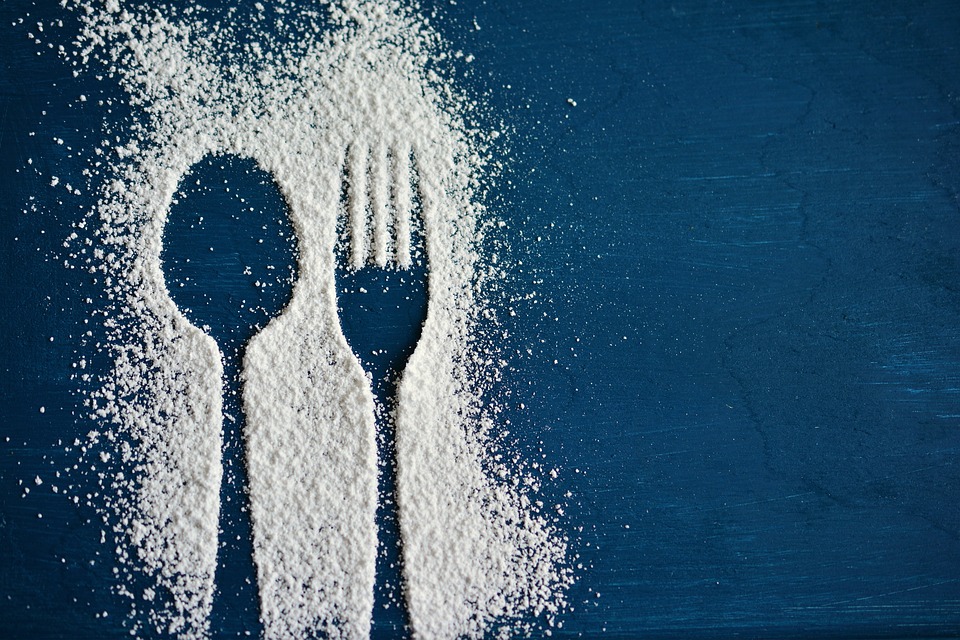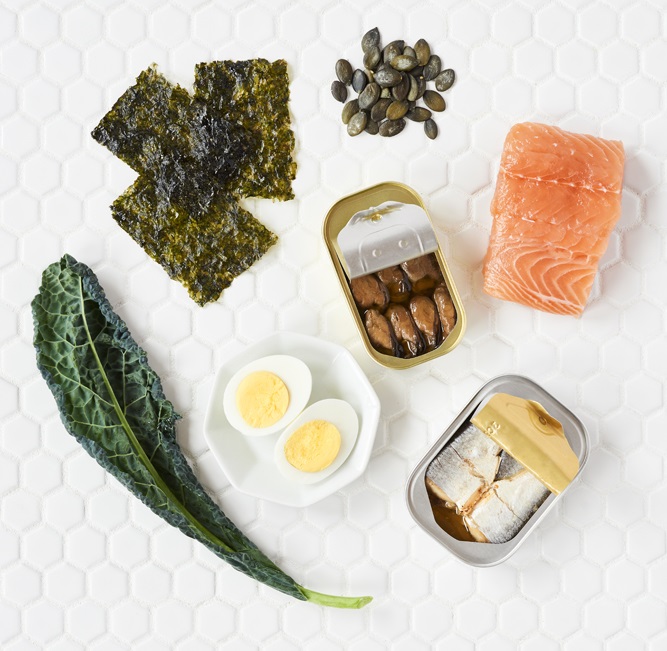November 5th, 2018
Sugar: Is it really THAT evil?
How much Sugar is too much?
This is the #1 question that we get from parents! And it’s understandable: there are no clear “guidelines” for sugar consumption; because we don’t REQUIRE sugar to live! In Canada, there is no differentiation when it comes to natural and added sugars on food labels, which makes it more confusing and harder to understand just how much and what type of sugar you are eating. The Canadian government recommends not exceeding a 100g/day sugar total (both natural + added). This doesn’t differentiate between gender or age, and for kids it is an excessive amount. Remember, this isn’t a recommended amount to GET everyday, rather an amount below which is more consistent with a healthy eating pattern. The World Health Organization recommends less than 10% of calories should come from added sugars daily. Since our food labels haven’t made it easy for us to discern what is added and what is natural, read on to find out where added sugars are lurking unexpectedly and where the natural ones can be found.
How much sugar are we eating?
Our sugar consumption has increased massively! The average American consumed 81.6kg of sugar in 2009- approximately 227 grams per day. We don’t have comparable Canadian data. That is more than double what is considered part of a healthy eating pattern.
Why is it important to monitor sugar intake?
Growing children are still developing their palettes and taste buds. They are super-tasters for sweet and salty foods, and food manufacturers are aware of this. The foods that children learn to enjoy at a young age can impact how the taste and experience foods and their food preferences in the long term. Not to mention the yet unknown negative impacts on the growth of healthy bacteria in their little guts. It is a losing battle to try to avoid all sugars in children’s diets today, they’re everywhere. Even if you don’t consume a lot of sugar at home, soon enough your child will be exposed at care centres, schools and parties.
We don’t want to vilify sugar either, or be overly restrictive. Being overly restrictive, even with a substance like sugar and easily backfire into creating negative, shameful or guilty feelings certain foods or their bodies. It is important to teach our children how to interact with and regulate high-sugary foods. Let them have choice about some timing and type of high-sugar foods. Talk to them about how they feel when they eat different foods, and how they feel when they’ve had too much versus a moderate amount of sugar. Be curious, not concerned in your response. Encourage them to pay attention to when their bodies are telling them to slow down or to reach for something more filling to go along with that sugary food, such as nuts, cheese or whole grains. This will help them to self-regulate their intake of sugary foods.
Types of Sugar
Glucose- This is the most common six carbon sugar that most carbohydrates break down to in the body in order to be used by cells. When you think of blood sugar, this is the sugar you are thinking of. It’s what our brains are dedicated to use to learn, grow and process. AND children turn over 6x as much glucose as an adult in a day with these processes!
Fructose- This is a five-carbon sugar, which comes from fruit. It is also the main sugar in honey and is actually about 5x sweeter than glucose. Because fructose is sweeter, we are also likely to be more sensitive to it, and therefore consume less. Fructose gets a bad rap as a processed version of itself called high-fructose corn syrup. This is a food additive, but alone, it’s not responsible for all the problems in the world, it’s highly processed food that is the issue. When consumed in whole forms in its high-fibre package, fructose is one of many things being digested, which slows the sugar spike. Adults need to watch how much fructose they consume due to it being processed as fuel directly in the liver. Too much can aggravate things like diabetes and non-alcoholic fatty liver disease.
Sucrose- Sucrose is better known as table sugar, and is a disaccharide formed with equal parts of fructose and glucose. It mainly comes from sugar beets and sugar cane, but is present in small amounts in most plants.
Lactose- This is the naturally-occurring sugar in all dairy products. It is even found naturally in breast-milk, as we are mammals too. This is much less sweet than the other two forms of sugars, though some people have issues digesting it. 75% of the population of the world is intolerant to lactose, but most people do not have symptoms of this. That can mean there is no issue with lactose, unless of course you are suffering negative symptoms. Many adults have difficulty processing lactose, and therefore dairy in general past childhood.
High-fructose corn syrup- This foods gets a lot of press because it is in everything these days, but does it deserve the bad reputation? Truth is that gram for gram, HFCS has the exact same effect as every other type of sugar, It just happens to be an incredibly inexpensive form that is easy to stuff into packaged treats. The issue relates more to the amount of highly processed foods a family is eating and a lack of whole foods, compared to any issue with HFCS alone.
What is the glycemic index?
You may have heard about eating low-glycemic carbs, particularly if you know someone who is diabetic. The glycemic index is a scale (invented by Canadians!) that measures how carbohydrates affect blood sugar, particularly how fast they raise your blood sugar compared to pure glucose. Eating lower glycemic index carbohydrates means that blood sugar levels stay more steady. This is what we want 80% of our carbohydrates to be; very healthy pattern for families and leaves room for those high-sugar choices. Many factors affect the glycemic index of a food, so it cannot always be predicted. Factors in foods such as protein, sourdough and acids, certain fats and specific fibres and anti-nutrients can all slow down the digestion process in the body and therefore cause changes in the glycemic index. The glycemic index is a helpful reference, although sometimes the results are unexpected. For instance, white bread has a higher glycemic index than pure table sugar. Some examples of low GI foods include: whole oatmeal, whole rye kernel bread, whole soy products, beans/peas/lentils, al dente white pasta, and fruit.
I heard sugar, even small amounts, is causing inflammation in my body! Is that true?
Though this is a pretty popular theory, unfortunately there is a little evidence that added sugar alone, is contributing to widespread inflammation in the body. Inflammatory processes are complicated and affected by many stressors including diet, disease processes, genetics, medications and bacteria and viruses. It is really the amount of highly processed foods, lacking nutrition, that a high-sugar diet might be really be associated with. And it is the lack of important nutrients that may trigger inflammatory processes. It would be nice to have a simple answer to inflammation, but it’s not possible to attribute it sugar alone.
Where Sugar Hides in Your Diet
So, where is the sugar in your diet anyways? Cutting down on sugar is not always as easy as it seems, and it’s listed under many names that might not be familiar to you. While candies, chocolates, pastries, frozen desserts and treats are the most obvious places, sugars are also high in many processed and fast foods, drinks of all kinds, frozen meals, condiments and sauces (BBQ sauce and ketchup we are looking at you), canned foods, and sadly any type of products for children! A recent study showed food products made for toddlers often have higher amount of salt and sugar than comparable food products for adults. “Kids” yogurts, drinkable yogurts, crackers, puffy snacks, biscuits, cereals, and sugar-sweetened beverages for kids are the worst offenders. These have now been clearly linked to increased risk of diabetes and some cancer in children. Soda, pop, juice, and all the sugary liquids are not necessary, water and if you consume milk, are all a child needs.
Always check the label. If there is sugar listed on the nutrition facts but you don’t see it in the ingredients, look for other forms such as any type of syrup, honey, molasses, fruit concentrated and purees, glucose, glucose-fructose, or other words ending in -ose. Take some time in the grocery store to compare labels and see where sugar is hiding from you. Drink water. Buy plain yogurt instead of flavoured.
Happy Sugars
We don’t want you to have a sugar-anxiety from all of this or to label sugar as “bad”. Naturally occurring sugars are an important part of the diet and our brain’s main and preferred source of energy. If you have a grumpy child on your hands, check: when is the last time they had some carbs?! So let’s focus on finding those happy sugars and consuming more of them! Happy sugars are naturally occurring and come in foods with lots of fibre and other components to slow down the rush and provide other vital nutrients. Think whole fruits and veggies, whole grain breads and pastas, and dairy. Lots of people are tempted to put 100% natural fruit juice on this list, but fruit juice is just sugar-water. Keep your amounts of juice small and diluted, and eat with fibrous and protein-rich foods if you must have it. AND remember, the happiest sugar of all are the ones you plan; you know, like a bit of syrup with homemade pancakes on Saturday, or your birthday cake, or baking oatmeal cookies with your family, or having a delicious sugary treat during the holidays. Enjoy added sugar sometimes, and teach your kids to notice and enjoy added sugars, and you can breathe deep…sugar isn’t really the root of all evil.


